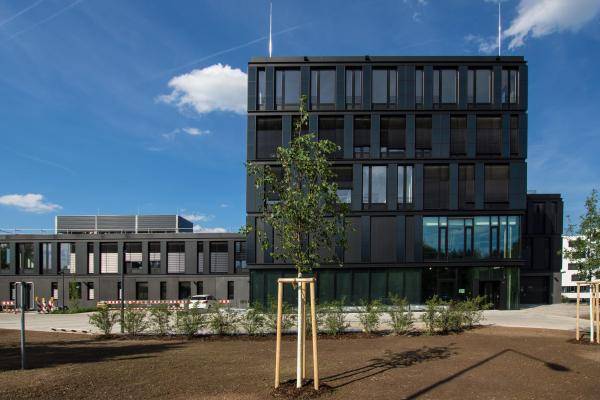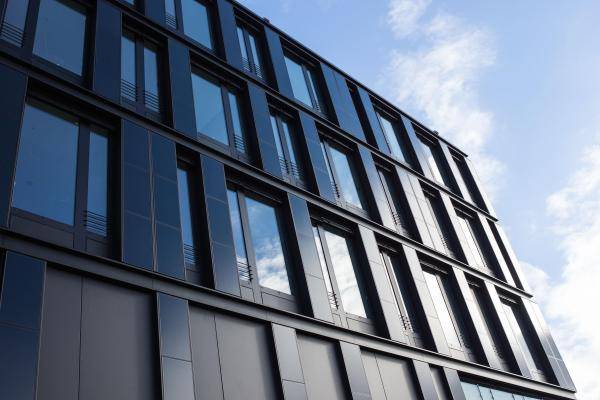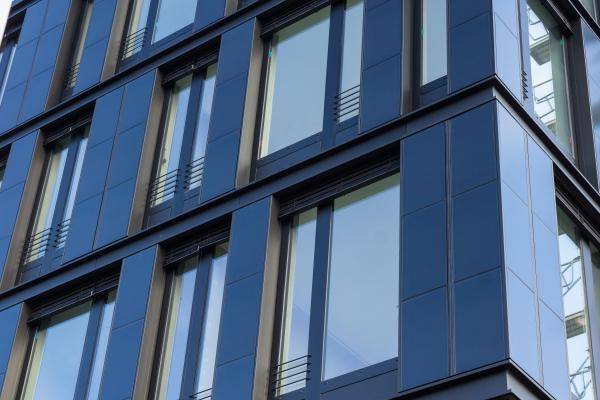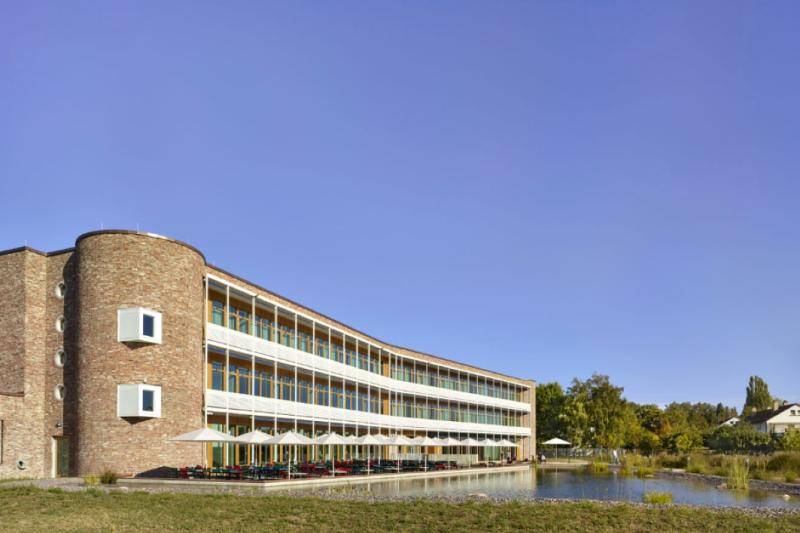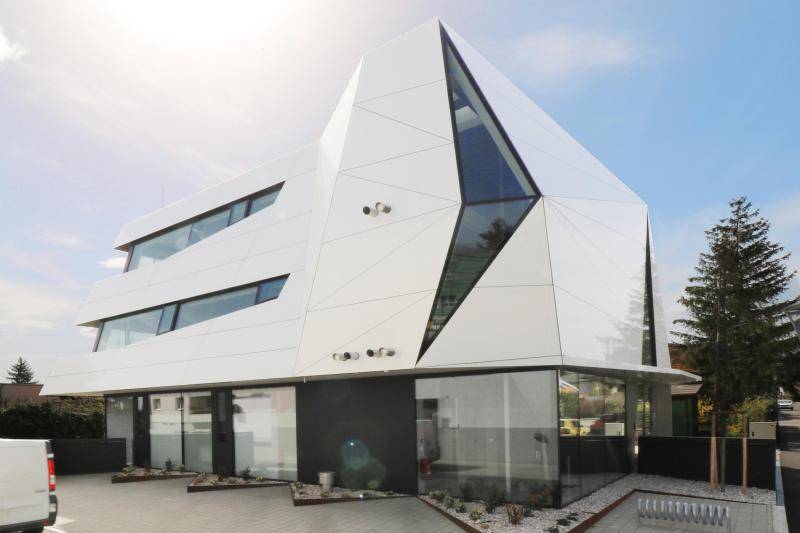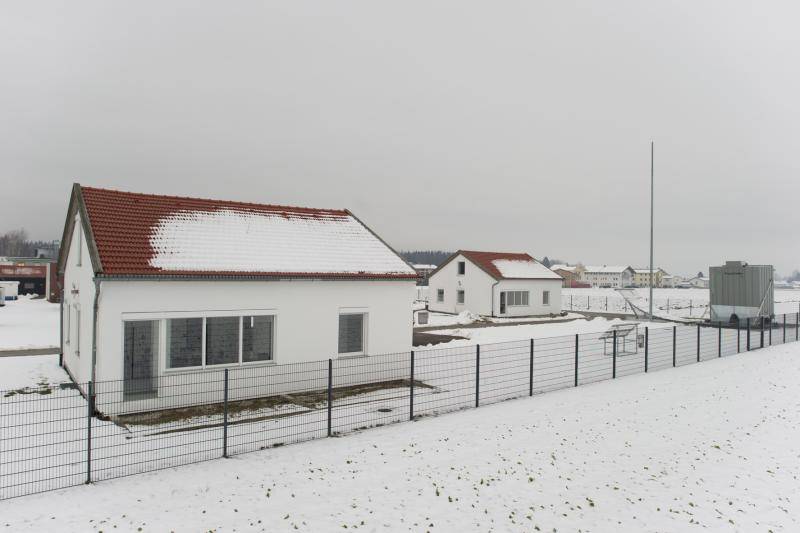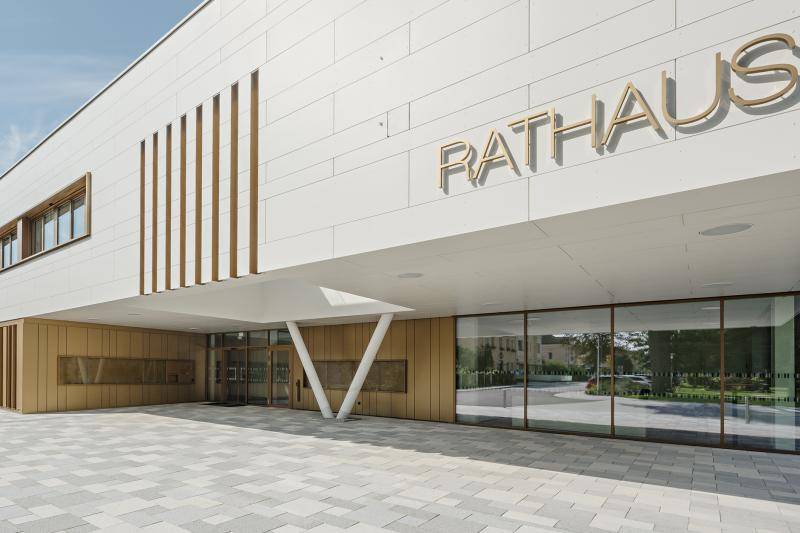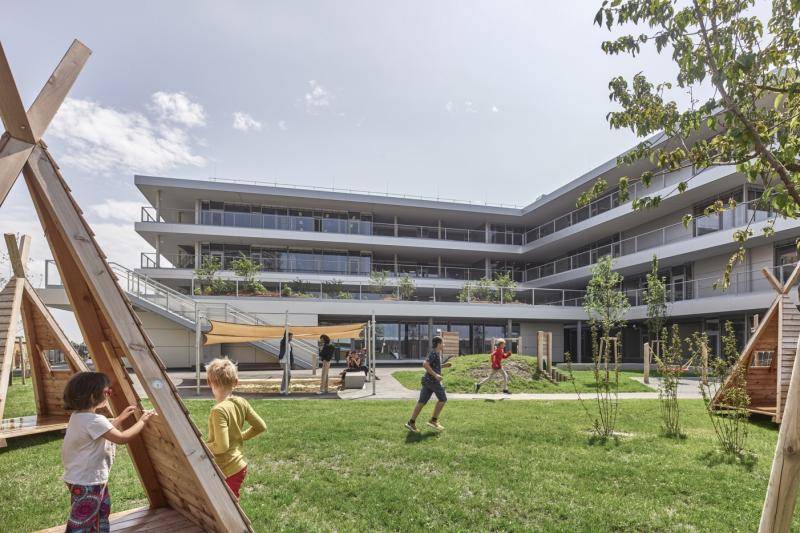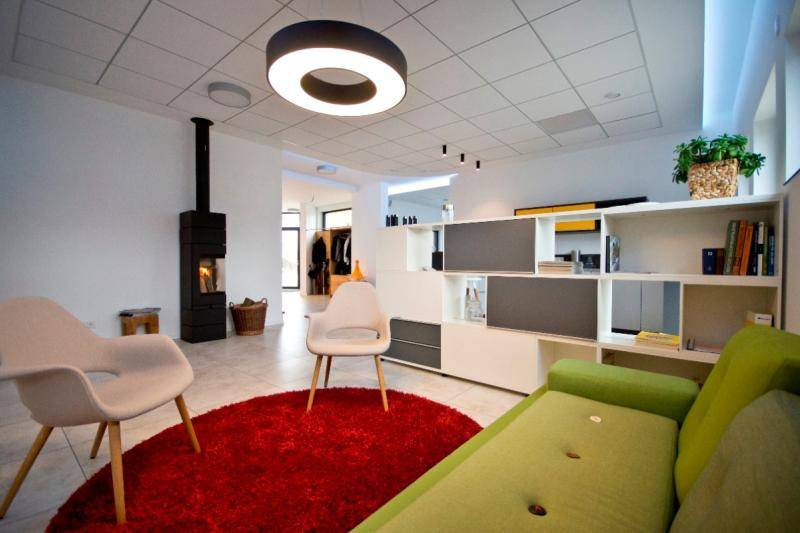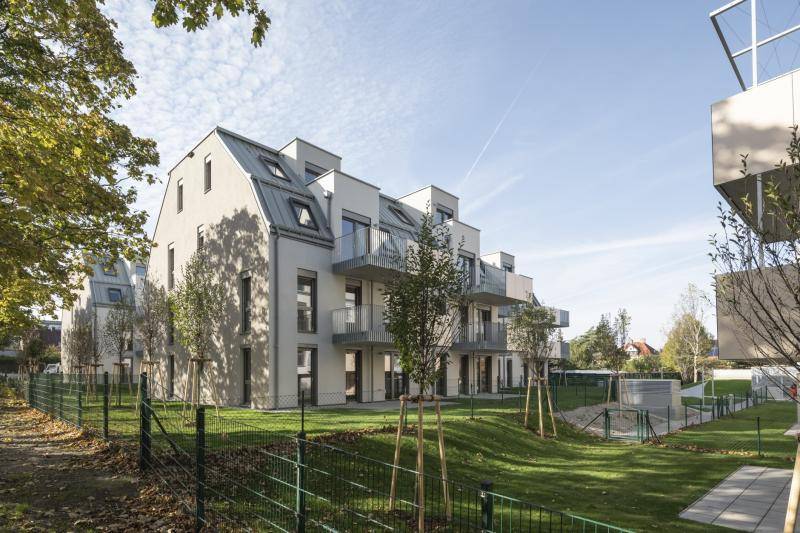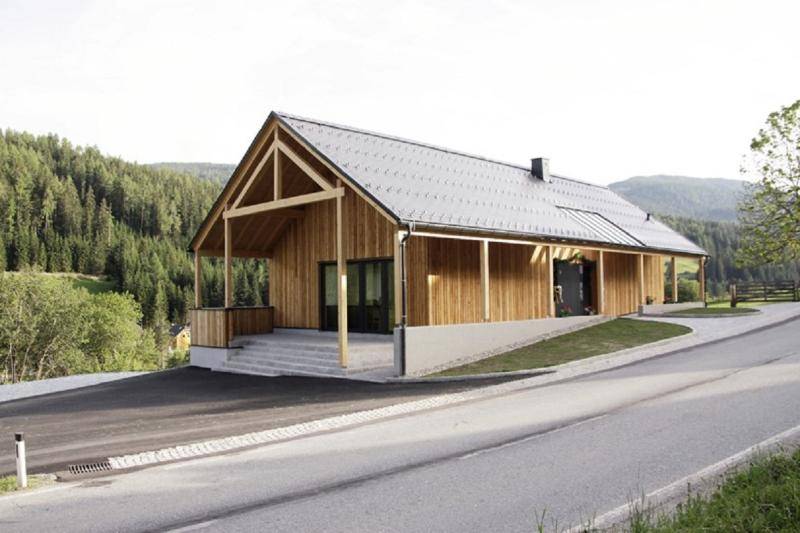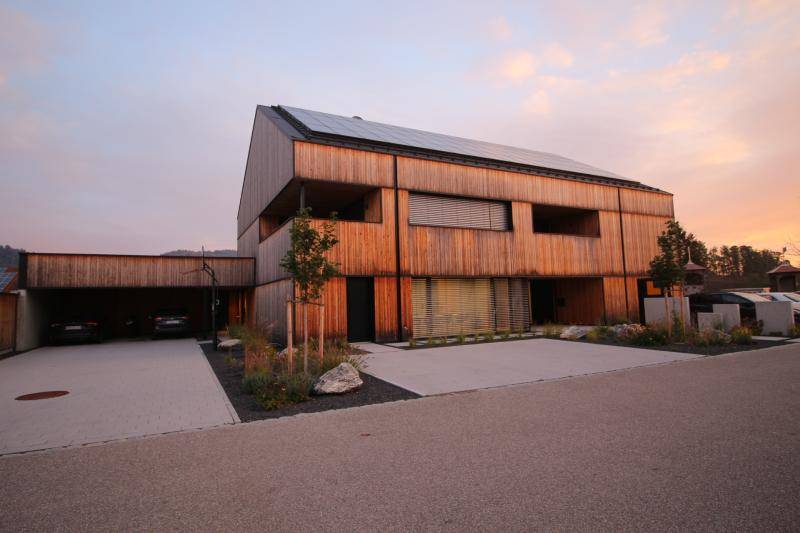ZSW Baden-Württemberg
The Center for Solar Energy and Hydrogen Research Baden-Württemberg, ZSW, moved into its new institute building at the Stuttgart site last year. The scientists now have more space and an improved infrastructure for developing technologies for the energy transition. The building's energy needs are largely covered by climate-friendly sources.
Center for Solar Energy and Hydrogen Research, Baden-Württemberg (ZSW)
2017
structural engineering: Mayer-Vorfelder und Dinkelacker Ingenieurgesellschaft
site management: Guggenberger + Ott Architekten GmbH
energy simulation: Transsolar Energietechnik GmbH
building services: Klett Ingenieur-GmbH
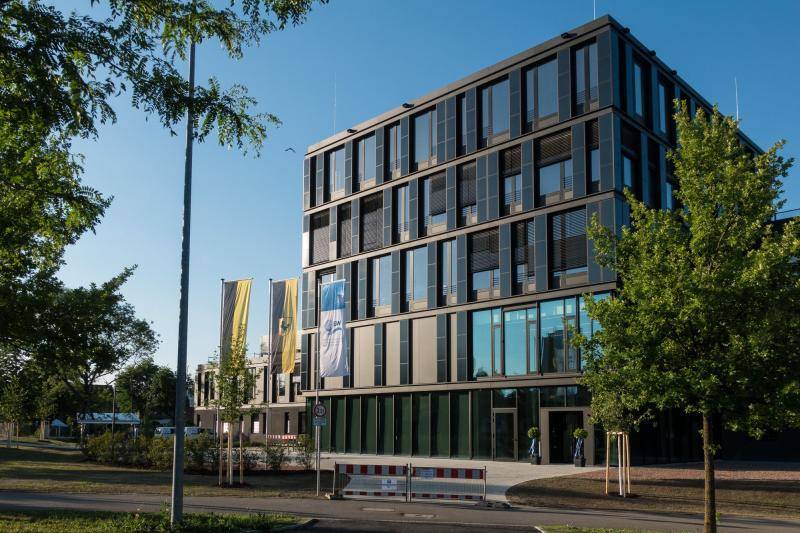
The pure usable area of the building is 8,000 square meters, around 30 percent more than before. Research halls and laboratories account for just under half of the space. The new building thus offers the possibility for the first time of accommodating larger research laboratories, workshops and offices of the current 110 employees in Stuttgart under one roof.
The design by Henning Larsen Architects, with its interlocking building sections, supports communication among employees. The rooms are designed so that they can be used flexibly if the research focus changes.
32 geothermal probes and a heat pump dissipate excess heat from offices and laboratories into the ground in summer. In winter, geothermal heat is drawn from underground for heating purposes. At the heart of the energy concept is building component activation. This uses the active temperature control of concrete as a secondary storage system. The building component activation covers the heating and cooling requirements primarily in the office and technical areas, with the concrete being charged at night when there are no additional internal loads. The radiant heat and cooling create a high level of thermal comfort in the rooms.
(Text: Gisela Gary; Z+B magazine; in shortened form)
